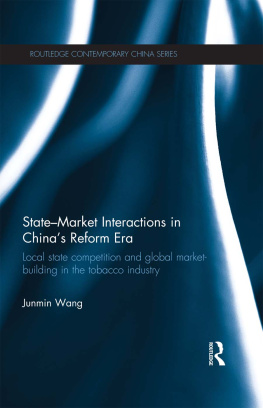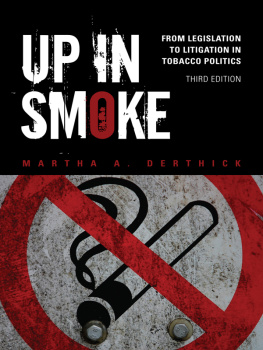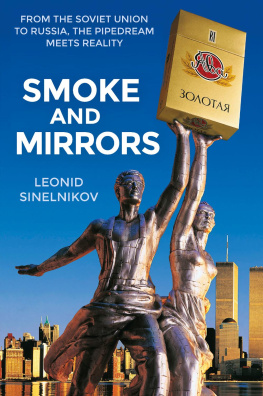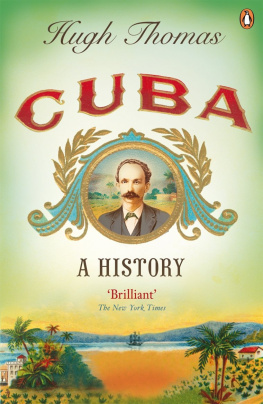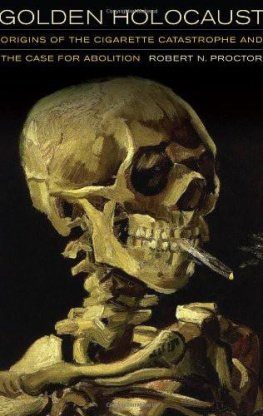THE GOLDEN LEAF
The Golden Leaf
How Tobacco Shaped Cuba and the Atlantic World
CHARLOTTE A. COSNER
VANDERBILT UNIVERSITY PRESS
Nashville
2015 by Vanderbilt University Press
Nashville, Tennessee 37235
All rights reserved
First printing 2014
This book is printed on acid-free paper.
Text design and composition by Tseng Information Systems, Inc.
Manufactured in the United States of America
Library of Congress Cataloging-in-Publication Data on file
LC control number 2014013076
LC classification HD9144.C92C67 2014
Dewey class number 338.4'76797097291dc23
ISBN 978-0-8265-2032-6 (hardcover)
ISBN 978-0-8265-2034-0 (ebook)
In memory of Raymond L. Cosner and Lester V. Cosner, the two men who taught me about tobacco.
Contents
Acknowledgments
OVER THE COURSE OF THIS PROJECT, I have amassed a list of people who have aided me in innumerable ways, and there are many more I have not mentioned by name here.
Funding from various sources made research trips to distant archives and conferences possible. I gratefully acknowledge the financial support for this project from the following institutions: the Program for Cultural Cooperation between Spains Ministry of Culture and US Universities, the Lydia Cabrera Award for Cuban Historical Studies from the Conference on Latin American History, the Ford Foundation Grant for Student Travel from the Cuban Research Institute at Florida International University, the Escuela de Estudios HispanoAmericanos, the Jay I. Kislak Foundation, Florida International Universitys Department of History, and the Chancellors Office and the History Department at Western Carolina University.
Staff and directors at the Archivo General de Indias and the Centro de Estudios HispanoAmericanos in Seville, Spain, the Archivo Nacional de Cuba, the Archivo Historico Provincial de Pinar del Ro, the Special Collections Department at the Steven and Dorothea Green Library at Florida International University, the Special Collections Department at the Otto G. Richter Library at the University of Miami, and the Interlibrary Loan staff at Western Carolina University all provided a wonderful atmosphere for research, granted access to the materials needed to bring this work to completion, and were ever patient with my many requests.
My infinite gratitude and thanks go to my dissertation advisor and mentor, Sherry Johnson at Florida International University. Sherry helped me with this topic long before I officially became her student, and continued to do so even after I had stopped. Along the way, she taught me to be a more efficient and dedicated scholar and a cleaner writer, and she became a lifelong friend. Im lucky to have Sherry in my corner and hope that this long-overdue work can serve as partial compensation for all that she has done on my behalf over the years.
At archives and conferences, I have discussed various aspects of this topic with numerous people, all of whom have given me great insights and asked probing questions. I cannot name them all, but am very grateful for their time and feedback. I owe a debt to the anonymous readers who made invaluable suggestions and comments. The editorial board and staff of Vanderbilt University Press have shepherded me through the publication process with such kindness, patience, and helpfulness and have made every step an absolute joy. Eli Bortz, in particular, expressed a very early interest in this work, and showed the patience of Job as I produced this final version.
Friends and family tolerated my increasing absences, both physically and mentally, as I plodded away at the book, writing and rewriting it more times than I can count. They encouraged me, silently at times, and more vocally toward the end of the project when I needed it most. In Cullowhee, Im proud to call a group of pretty amazing people my friends. They have made the task of focusing on my job of Working Mom that much easier. During the summer of 2012, in particular, Nora Leal, Guillermo Cardona, Matilde Mati Castellanos, and Viviana Alferez provided me with the luxury of living as a full-time writer, which meant I was able to advance this work in ways that would otherwise have been impossible. My children have grown up with this project. Patrick, Virginia, and Adam have never known a time, it seems, when Mommy wasnt working on her book. Maybe when they are finally able to hold it in their hands the idea will become real, and they will overlook the many times when I went to the office and stayed long past their bedtimes. I am so grateful for their patience with me and their understanding, as well as that of my husband, Rick Cardona, who has remained my rock through thick and thin.
Introduction
CHRISTOPHER COLUMBUS MADE CLEAR and careful observations of the local geography, its inhabitants, and their customs during his 1492 voyage to the New World. In early November, Columbus sent two men, Rodrigo de Jerez and Luis de Torres, to explore the interior of an island. The crewmembers returned within a week, bringing tales of a weed twisted and smoked by the Native Americans. Europeans had seen this dried substance earlier, during encounters with the areas indigenous populations. Although Columbus and his crew were uncertain of the plants name, these descriptions provide the first known European reference to tobacco. The significance of Europes introduction to this important commodity is clear today, but at the time, Columbus and his men were unimpressed by this new discovery.
Gold, in contrast, was of great interest. Columbuss journal noted the items traded by the indigenous people, such as parrots and cotton thread in balls and javelins and many other things, but what the sailor hoped to find was gold. The Spanish sovereigns Ferdinand and Isabel had granted the Genoese sailor many rights and privileges under the Capitulations of Santa F. These included the ranks of admiral, viceroy, and governor-general, along with 10 percent profit on all goods obtained by trade. Columbus therefore was under a tremendous amount of both personal and external pressure to succeed in his overseas mission. Columbuss own log detailed this struggle. Columbus anchored on 15 October off the coast of an island he named Santa Mara de la
Neither Cuba nor the other Caribbean islands possessed the quantities of gold that European conquistadors hoped to discover. Still, the quest for gold persisted among New World sixteenth-century explorers and adventurers as Spain continued to search for the precious metal on subsequent expeditions to the Mesoamerican and South American mainland. Some were successful, like Hernn Corts and Francisco Pizarro in Mexico and Peru, respectively. Otherssuch as Hernando de Soto and Francisco Vzquez de Coronado, at opposite ends of what is now the southern part of the United Stateswere not. In the wake of the discovery of the Aztec and Inca civilizations vast treasure, the Spaniards drive was understandable. Initially, Europeans paid little attention to other economic activities, overlooking other possibilities that could have proven more lucrative, Georg Friederici argues. The search for and obtaining of mineral resources became a standard part of Iberian conquest and colonization. Gold and other precious minerals obtained through Native American labor were a seemingly endless resource and provided Spain with riches. Unfortunately for Spain, however, the cost of empire was great, and expenses frequently outpaced the New Worlds income, causing Spains Felipe II (reigned 15561598) to declare bankruptcy no less than four times within a span of less than fifty years.
Columbus may have returned home without the glittering treasure he had hoped to find, yet his first voyage was far from unproductive. Exploration led to expanded European empires, and over time, tobacco became an important New World cash crop. From a botanical perspective, however, tobacco seems rather inauspicious. The plant is a member of the large
Next page

